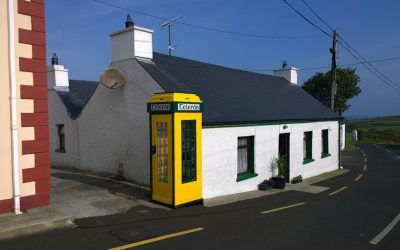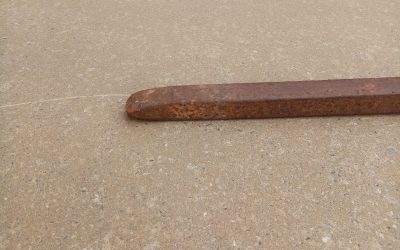The Carrowmenagh Evictions
On the 27th, 28th, and 29th December, 1881, 13 families were evicted from their homes in the village of Carrowmenagh, in the Inishowen peninsula.
The tenants were behind in their rent payments and had no means of paying the arrears.
Last minute appeals by the parish priest of Moville, Father Michael Farnan to the landlord to accept a portion of the rent fell on deaf ears. The response from the land agent was that it was ‘all or nothing’. Father Farnan wrote to the Derry Journal outlining the wretched state of the tenants who had but rags for clothing, but still to no avail.
Absentee landlord, Hector Fredrick McNeil who lived in Scotland, had even wanted the evictions to take place on Christmas Day but the law would not allow it.
Instead, two days after Christmas, with a bitter east wind blowing and snow falling, land agent, James GH Harvey from Derry, accompanied by a troop of approximately 100 from the Royal Irish Constabulary and the British Army, arrived at the village and forcibly removed men, women and children from the cottages which were then destroyed.
Many found shelter with family in neighbouring areas with more sympathetic landlords but some were forced to brave the elements.
One family, made up of three generations, spent two days out in the harsh weather behind a ‘whin bush’ with straw for beds and a makeshift shelter put together with bags. The conditions proved too severe and led to the death of one of them.
The evictions took place at the height of the Land War with Michael Davitt and Charles Stewart Parnell leading a nation-wide campaign against extortionate rack rents imposed on tenant farmers.
Before the evictions took place, Parnell had visited Carrowmenagh and urged people to withhold the rack rent.
Many landlords realised they could get a higher rent by returning their properties to pasture rather than continuing with the older practice of collecting rent form tenant farmers. Evictions were the most common way of getting rid of unwanted tenants.
Generally, tenants frequently built their cottages from local materials. The rent was higher if they had windows or if the door was over a certain height or if they made improvements or enlargements to the dwelling.
The landlords practiced Rack Renting to get rid of unwanted tenants. Rents, collected twice yearly in May and November, were raised to the point where the tenant could no longer afford to pay them. The landlord then had the tenant evicted for non payment of rent. There were no appeals an no mercy shown.
The tenants were behind in their rent payments and had no means of paying the arrears.
Last minute appeals by the parish priest of Moville, Father Michael Farnan to the landlord to accept a portion of the rent fell on deaf ears. The response from the land agent was that it was ‘all or nothing’. Father Farnan wrote to the Derry Journal outlining the wretched state of the tenants who had but rags for clothing, but still to no avail.
Absentee landlord, Hector Fredrick McNeil who lived in Scotland, had even wanted the evictions to take place on Christmas Day but the law would not allow it.
Instead, two days after Christmas, with a bitter east wind blowing and snow falling, land agent, James GH Harvey from Derry, accompanied by a troop of approximately 100 from the Royal Irish Constabulary and the British Army, arrived at the village and forcibly removed men, women and children from the cottages which were then destroyed.
Many found shelter with family in neighbouring areas with more sympathetic landlords but some were forced to brave the elements.
One family, made up of three generations, spent two days out in the harsh weather behind a ‘whin bush’ with straw for beds and a makeshift shelter put together with bags. The conditions proved too severe and led to the death of one of them.
The evictions took place at the height of the Land War with Michael Davitt and Charles Stewart Parnell leading a nation-wide campaign against extortionate rack rents imposed on tenant farmers.
Before the evictions took place, Parnell had visited Carrowmenagh and urged people to withhold the rack rent.
Many landlords realised they could get a higher rent by returning their properties to pasture rather than continuing with the older practice of collecting rent form tenant farmers. Evictions were the most common way of getting rid of unwanted tenants.
Generally, tenants frequently built their cottages from local materials. The rent was higher if they had windows or if the door was over a certain height or if they made improvements or enlargements to the dwelling.
The landlords practiced Rack Renting to get rid of unwanted tenants. Rents, collected twice yearly in May and November, were raised to the point where the tenant could no longer afford to pay them. The landlord then had the tenant evicted for non payment of rent. There were no appeals an no mercy shown.
The following attachments were researched and compiled by Dan McFeeley
of the McFeely Roots Project.
Carrowmenagh Evictions PDF 1
The Evictions at Carrowmenagh.
Link to the Carrowmenagh Evictions pdf...
‘The Sheriff’
A crowbar coined 'The Sheriff'...

